Precious Blood and Word of God,
You are my eternal salvation.
Lost in sin, You liberated me.
You lifted me from perdition.
Treasuring my feeble soul,
You excused my constant frailties.
Forever, I am indebted to You.
Your cost can never be repaid,
For You bought my freedom with Blood.
I will always seek You out my Lord,
You are my beloved Deliverer!
You are the Lamb of God!
A reading from the Letter of St. Paul to the Romans
1:16-25
Brothers and sisters:
I am not ashamed of the Gospel.
It is the power of God for the salvation of everyone who believes:
for Jew first, and then Greek.
For in it is revealed the righteousness of God from faith to faith;
as it is written, "The one who is righteous by faith will live."
The wrath of God is indeed being revealed from heaven
against every impiety and wickedness
of those who suppress the truth by their wickedness.
For what can be known about God is evident to them,
because God made it evident to them.
Ever since the creation of the world,
his invisible attributes of eternal power and divinity
have been able to be understood and perceived in what he has made.
As a result, they have no excuse;
for although they knew God
they did not accord him glory as God or give him thanks.
Instead, they became vain in their reasoning,
and their senseless minds were darkened.
While claiming to be wise, they became fools
and exchanged the glory of the immortal God
for the likeness of an image of mortal man
or of birds or of four-legged animals or of snakes.
Therefore, God handed them over to impurity
through the lusts of their hearts
for the mutual degradation of their bodies.
They exchanged the truth of God for a lie
and revered and worshiped the creature rather than the creator,
who is blessed forever. Amen.
From the Gospel according to Luke
11:37-41
After Jesus had spoken,
a Pharisee invited him to dine at his home.
He entered and reclined at table to eat.
The Pharisee was amazed to see
that he did not observe the prescribed washing before the meal.
The Lord said to him, "Oh you Pharisees!
Although you cleanse the outside of the cup and the dish,
inside you are filled with plunder and evil.
You fools!
Did not the maker of the outside also make the inside?
But as to what is within, give alms,
and behold, everything will be clean for you."
They are not beautiful words, eh? Jesus spoke clearly, He was not a hypocrite. He spoke clearly. And he said to them, “But why do you look at what is external? Look at what is within.” Another time He said to them, “You are whitened sepulchres.” Nice compliment, eh? Beautiful on the outside, all perfect… all perfect… but within? Be careful around those who are rigid. Be careful around Christians – be they laity, priests, bishops – who present themselves as so “perfect,” rigid. Be careful. There’s no Spirit of God there. They lack the spirit of liberty. And let us be careful with ourselves, because this should lead us to consider our own life. Do I seek to look only at appearance, and not change my heart? Do I not open my heart to prayer, to the liberty of prayer, the liberty of almsgiving, the liberty of works of mercy? (Pope Francis, Santa Marta, 16 October 2018)
Read More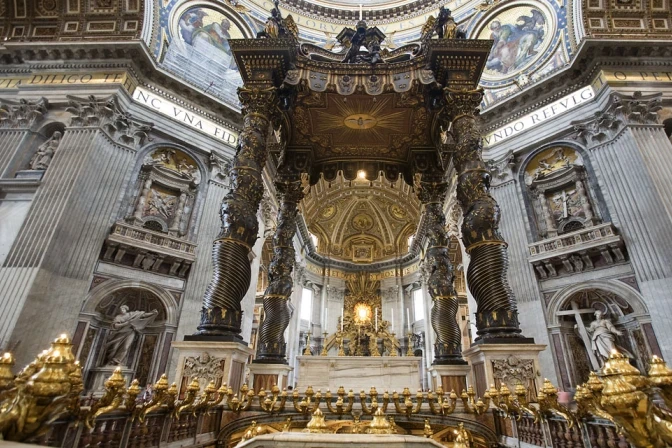

The main altar at St. Peter’s Basilica in Rome, which was desecrated on Oct. 10, 2025. / Credit: Jorge Royan (CC BY-SA 3.0)
ACI Prensa Staff, Oct 13, 2025 / 17:43 pm (CNA).
Cardinal Mauro Gambetti, archpriest of St. Peter’s Basilica and vicar general of the pope for Vatican City, presided Oct. 13 over a penitential rite of reparation at the main altar of the church following a serious act of desecration that had taken place on Oct. 10.
After a penitential procession that began at 12:45 p.m. local time, Gambetti sprinkled the altar with holy water and incensed it to purify it.
The rite, attended by members of the chapter of the Vatican basilica, emphasized asking God for “forgiveness” for the desecration, Father Enzo Fortunato, director of communications for St. Peter’s Basilica, told ACI Prensa, CNA’s Spanish-language news partner.
On Friday, Oct. 10, a man whose identity has not been revealed was arrested by security guards after he climbed onto the Altar of the Confession, located under Bernini’s baldachin, and urinated on it while tourists looked on in astonishment.
Pope Leo XIV expressed his consternation upon learning of the incident and asked Gambetti to perform an act of reparation to restore the sanctity of the place and ask forgiveness for what had happened.
This is the second instance of desecration in St. Peter’s Basilica in less than a year. In February, a man severely damaged part of the main altar, breaking several candelabras. In June 2023, an individual of Polish origin stripped naked in the same place as a form of protest against the war in Ukraine.
This story was first published by ACI Prensa, CNA’s Spanish-language news partner. It has been translated and adapted by CNA.
Read More
WORLD — Leftists across the globe took to the streets over the weekend to protest the ceasefire in Gaza and the end of genocide.
Read More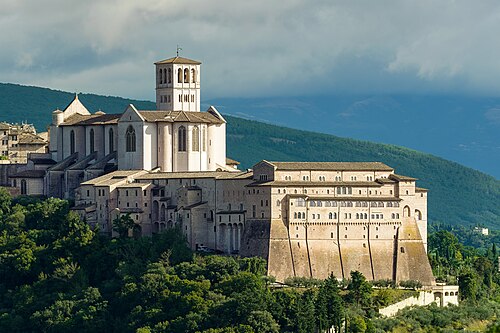
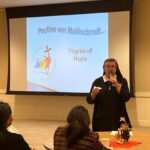
Mendham retreat focuses on ‘hope’ of religious order’s foundress #Catholic – ![]()
Fifty Companions of Pauline, associates of the Sisters of Christian Charity, united at the sisters’ motherhouse in Mendham, N.J., for their annual retreat day, guided by the theme, “Blessed Pauline: Pilgrim of Hope.”
Sister of Christian Charity Joseph Spring, co-director of the Companions of Pauline for the North American Province, welcomed the group. She shared with them a prayer used during the international meeting of the directors from Germany, South America, and the Philippines.
Click here to subscribe to our weekly newsletter.
Then, Sister of Christian Charity Sister Mary Theresa Wojcicki led the companions to reflect on the theme “Mother Pauline: Pilgrim of Hope.” Pauline von Mallinckrodt, foundress of the Sisters of Christian Charity, was beatified in 1985.
Father Michael Drury, a retired priest of the Diocese of Paterson in New Jersey, celebrated a Mass, followed by a meal.
The retreat ended with Sister Spring highlighting aspects of Blessed Pauline’s life in which she was a “pilgrim of hope.” Participants were then asked to reflect on how they are “pilgrims of hope.”
– ![]() Fifty Companions of Pauline, associates of the Sisters of Christian Charity, united at the sisters’ motherhouse in Mendham, N.J., for their annual retreat day, guided by the theme, “Blessed Pauline: Pilgrim of Hope.” Sister of Christian Charity Joseph Spring, co-director of the Companions of Pauline for the North American Province, welcomed the group. She shared with them a prayer used during the international meeting of the directors from Germany, South America, and the Philippines. Click here to subscribe to our weekly newsletter. Then, Sister of Christian Charity Sister Mary Theresa Wojcicki led the companions to reflect on the theme “Mother
Fifty Companions of Pauline, associates of the Sisters of Christian Charity, united at the sisters’ motherhouse in Mendham, N.J., for their annual retreat day, guided by the theme, “Blessed Pauline: Pilgrim of Hope.” Sister of Christian Charity Joseph Spring, co-director of the Companions of Pauline for the North American Province, welcomed the group. She shared with them a prayer used during the international meeting of the directors from Germany, South America, and the Philippines. Click here to subscribe to our weekly newsletter. Then, Sister of Christian Charity Sister Mary Theresa Wojcicki led the companions to reflect on the theme “Mother

Derry takes its Halloween traditions seriously—with fireworks, parades, and thousands of people in costume.
Read More![At U.S. ‘supermax’ prison, foreign-born Muslim with no arms files religious liberty suit - #Catholic -
A view of the United States Penitentiary Administrative Maximum Facility, also known as the ADX or “Supermax” prison in Florence, Colorado. The facility has been dubbed the “Alcatraz of the Rockies” because of its remote location and harsh security measures. / Credit: JASON CONNOLLY/AFP via Getty Images
CNA Staff, Oct 13, 2025 / 06:00 am (CNA).
A foreign-born Muslim inmate currently incarcerated in the U.S.’s most severely restrictive prison complex is asking the government to require the prison to accommodate his religious practices under a key federal statute, highlighting the far-reaching and comprehensive nature of religious freedom rules in the United States. U.S. District Judge Philip Brimmer in a Sept. 25 ruling agreed that Mostafa Kamel Mostafa had demonstrated that prison officials at the maximum facility had “substantially burdened the exercise of his religion” by failing to install a special cleaner in one of his cells.The prison, a “supermax” facility in Colorado commonly known as ADX Florence and colloquially as the “Alcatraz of the Rockies,” is famous for its near-total state of lockdown. Housing some of the most dangerous inmates in the U.S. penitentiary system, it features poured concrete cells in which prisoners are confined for most of the day as well as high-level security protocols that include motion detectors, pressure pads, and pits used for exercise. Mostafa was sentenced to life in prison in 2015 for his role in a deadly hostage-taking scheme in 1998 and other terrorist activities. He is incarcerated in the “H-unit” of ADX Florence, its most secure wing. Formerly an imam at a U.K. mosque, Mostafa follows Islamic rules regarding prayer, including a mandate to “make himself clean and presentable before praying.” With both his arms amputated above the elbow, he requires some accommodations to that end, including a bidet in his cell toilet. Mostafa has had two cells adapted for his disabilities; the prison has installed a bidet in one but not the other. Brimmer in his ruling found that “until [the prison] install[s] a bidet in both of Mr. Mostafa’s cells,” the prisoner has a claim to a burden on his religious exercise. ‘Everybody has access to the fundamentals’Though the dispute has made its way to U.S. district court, it may be moot before it goes any further, as prison officials have explicitly stated that they are “in the process” of installing a bidet in Mostafa’s second cell. Yet the case underscores just how extensively the principles of religious liberty have been applied in the United States, up to and including accommodating modifications to the prison cell toilet of a foreign-born terrorist.Robert Destro, a professor of law at The Catholic University of America’s Columbus School of Law and the former federal assistant secretary of state for democracy, human rights, and labor, said in an interview that religious liberty cases arise regularly within prison populations. Mostafa brought the case in part under the federal Religious Freedom Restoration Act (RFRA), a Clinton-era law that restricts how and under what conditions the U.S. government can impose burdens upon U.S. religious liberty.Destro said RFRA is similar in some ways to the Americans with Disabilities Act, a 1990 federal law that requires “reasonable accommodations” in hiring and business practices for disabled people. “In a way, RFRA is a little like the ADA,” he said. “It wants to make sure that everybody has access to the fundamentals. Just because you’ve been sentenced to prison because you did something bad, or stupid, or both, doesn’t mean that you lose your First Amendment rights.”The dispute in prison cases, Destro said, is usually “how much the prison should defer to the warden and to prison policies” and to what extent it’s obligated to accommodate a religious belief. In Mostafa’s case, “it seems like a fairly simple answer,” he said.“The guy has a disability,” he pointed out. “There’s no question about his faith. [And] there’s no way that somebody with no arms and access to a stream of water is going to, you know, burn down the prison. There’s no tangible security threat.”The federal government explicitly states that neither the national nor state governments may “impose a substantial burden on the religious exercise of a person residing in or confined to an institution,” barring concerns of a “compelling governmental interest” carried out in the “least restrictive means” possible. That language is virtually identical to the text of RFRA. Destro said the principle is “a lot less cosmic than it looks.” “The design of RFRA … was to shift the burden over to the government to say, why is this a big burden for you?” he said. The government only gets a “free pass,” he said, if it can show that an abrogation of religious liberty “has to do with health, safety, or some other very limited security issues.”Further religious liberty expansions for prisoners could be on the horizon. The Supreme Court earlier this year said it would decide whether prisoners can sue individual prison workers — rather than merely the government itself — over violations of federal religious freedom law. Destro acknowledged that Mostafa’s fight at ADX Florence would likely be rendered moot by the government’s simply modifying his prison cell as requested. Still, he said, it often makes more sense for a government to quickly acquiesce to a prisoner’s reasonable request rather than fight it. “If you know you’re going to get sued on RFRA — just like getting sued under the ADA — why don’t you just make the accommodations and save the money on the lawsuit?” he said. “For the amount of money it’s going to cost you to put in a bidet, it’s cheaper than having a lawyer go to court.”“For the money you’ve spent defending the suit, you could’ve put the thing in and been done with it!” he said with a laugh. “That’s not always the right answer. Sometimes there is a question of principle involved. But I don’t see one here.”](https://unitedyam.com/wp-content/uploads/2025/10/at-u-s-supermax-prison-foreign-born-muslim-with-no-arms-files-religious-liberty-suit-catholic-a-view-of-the-united-states-penitentiary-administrative-maximum-facility-als.webp)

A view of the United States Penitentiary Administrative Maximum Facility, also known as the ADX or “Supermax” prison in Florence, Colorado. The facility has been dubbed the “Alcatraz of the Rockies” because of its remote location and harsh security measures. / Credit: JASON CONNOLLY/AFP via Getty Images
CNA Staff, Oct 13, 2025 / 06:00 am (CNA).
A foreign-born Muslim inmate currently incarcerated in the U.S.’s most severely restrictive prison complex is asking the government to require the prison to accommodate his religious practices under a key federal statute, highlighting the far-reaching and comprehensive nature of religious freedom rules in the United States.
U.S. District Judge Philip Brimmer in a Sept. 25 ruling agreed that Mostafa Kamel Mostafa had demonstrated that prison officials at the maximum facility had “substantially burdened the exercise of his religion” by failing to install a special cleaner in one of his cells.
The prison, a “supermax” facility in Colorado commonly known as ADX Florence and colloquially as the “Alcatraz of the Rockies,” is famous for its near-total state of lockdown.
Housing some of the most dangerous inmates in the U.S. penitentiary system, it features poured concrete cells in which prisoners are confined for most of the day as well as high-level security protocols that include motion detectors, pressure pads, and pits used for exercise.
Mostafa was sentenced to life in prison in 2015 for his role in a deadly hostage-taking scheme in 1998 and other terrorist activities. He is incarcerated in the “H-unit” of ADX Florence, its most secure wing.
Formerly an imam at a U.K. mosque, Mostafa follows Islamic rules regarding prayer, including a mandate to “make himself clean and presentable before praying.” With both his arms amputated above the elbow, he requires some accommodations to that end, including a bidet in his cell toilet.
Mostafa has had two cells adapted for his disabilities; the prison has installed a bidet in one but not the other. Brimmer in his ruling found that “until [the prison] install[s] a bidet in both of Mr. Mostafa’s cells,” the prisoner has a claim to a burden on his religious exercise.
‘Everybody has access to the fundamentals’
Though the dispute has made its way to U.S. district court, it may be moot before it goes any further, as prison officials have explicitly stated that they are “in the process” of installing a bidet in Mostafa’s second cell.
Yet the case underscores just how extensively the principles of religious liberty have been applied in the United States, up to and including accommodating modifications to the prison cell toilet of a foreign-born terrorist.
Robert Destro, a professor of law at The Catholic University of America’s Columbus School of Law and the former federal assistant secretary of state for democracy, human rights, and labor, said in an interview that religious liberty cases arise regularly within prison populations.
Mostafa brought the case in part under the federal Religious Freedom Restoration Act (RFRA), a Clinton-era law that restricts how and under what conditions the U.S. government can impose burdens upon U.S. religious liberty.
Destro said RFRA is similar in some ways to the Americans with Disabilities Act, a 1990 federal law that requires “reasonable accommodations” in hiring and business practices for disabled people.
“In a way, RFRA is a little like the ADA,” he said. “It wants to make sure that everybody has access to the fundamentals. Just because you’ve been sentenced to prison because you did something bad, or stupid, or both, doesn’t mean that you lose your First Amendment rights.”
The dispute in prison cases, Destro said, is usually “how much the prison should defer to the warden and to prison policies” and to what extent it’s obligated to accommodate a religious belief.
In Mostafa’s case, “it seems like a fairly simple answer,” he said.
“The guy has a disability,” he pointed out. “There’s no question about his faith. [And] there’s no way that somebody with no arms and access to a stream of water is going to, you know, burn down the prison. There’s no tangible security threat.”
The federal government explicitly states that neither the national nor state governments may “impose a substantial burden on the religious exercise of a person residing in or confined to an institution,” barring concerns of a “compelling governmental interest” carried out in the “least restrictive means” possible.
That language is virtually identical to the text of RFRA. Destro said the principle is “a lot less cosmic than it looks.”
“The design of RFRA … was to shift the burden over to the government to say, why is this a big burden for you?” he said. The government only gets a “free pass,” he said, if it can show that an abrogation of religious liberty “has to do with health, safety, or some other very limited security issues.”
Further religious liberty expansions for prisoners could be on the horizon. The Supreme Court earlier this year said it would decide whether prisoners can sue individual prison workers — rather than merely the government itself — over violations of federal religious freedom law.
Destro acknowledged that Mostafa’s fight at ADX Florence would likely be rendered moot by the government’s simply modifying his prison cell as requested. Still, he said, it often makes more sense for a government to quickly acquiesce to a prisoner’s reasonable request rather than fight it.
“If you know you’re going to get sued on RFRA — just like getting sued under the ADA — why don’t you just make the accommodations and save the money on the lawsuit?” he said. “For the amount of money it’s going to cost you to put in a bidet, it’s cheaper than having a lawyer go to court.”
“For the money you’ve spent defending the suit, you could’ve put the thing in and been done with it!” he said with a laugh. “That’s not always the right answer. Sometimes there is a question of principle involved. But I don’t see one here.”
Read More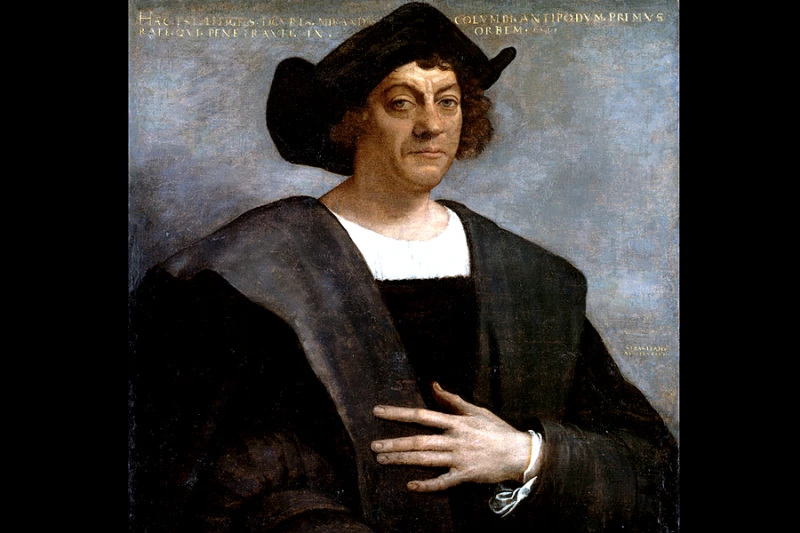

Christopher Columbus, by Sebastiano del Piombo, 1519. / Credit: Public domain
Washington, D.C. Newsroom, Oct 13, 2025 / 05:00 am (CNA).
President Donald Trump renewed the focus of Columbus Day to be celebrated on the second Monday of October, reclaiming the explorer’s “extraordinary legacy of faith, courage, perseverance, and virtue,” according to the president’s proclamation.
Since 1971, the second Monday in October has been federally recognized as Columbus Day to commemorate Columbus’ discovery of the Americas in 1492, celebrate Italian-American heritage, and acknowledge the 1891 lynchings of 11 Italian Americans. In 2021, former President Joe Biden issued the first presidential proclamation of Indigenous Peoples’ Day to be observed on the same day, following backlash toward Columbus.
The “current hostility to him is ill informed,” Felipe Fernández-Armesto, professor of history at the University of Notre Dame and author of “Columbus on Himself,” told CNA. “He was understandably conflicted about the people he encountered on this side of the ocean, but, by the standards of his contemporaries, his most characteristic judgments about them were highly positive.”
“Columbus Day is commendable — instituted in expiation of the worst lynching in U.S. history … Columbus suited a project of national reconciliation because he was, for most of the history of the U.S., a unifying figure.” Fernández-Armesto added: “He should remain so today.”
“He was not guilty of most of the excesses of cruelty that interested enemies at the time and ignorant critics today ascribe to him. His history was uniquely significant: He was genuinely the discoverer of viable routes to and fro across the Atlantic — reconnecting, for good and ill, formerly sundered cultures and enabling the world-transforming exchange of ideas and people, commerce and life-forms,” he said.
“It’s hard to think of anyone whose impact on the hemisphere has been greater,” Fernández-Armesto said.
Presidential proclamation
In an Oct. 9 proclamation, Trump wrote the previous years have been a “campaign to erase our history … and attack our heritage.” To combat this, Trump formally declared the day will be recognized as Columbus Day in honor of “the great Christopher Columbus and all who have contributed to building our nation.”
As a “titan of the Age of Exploration,” Columbus was “guided by a noble mission: to discover a new trade route to Asia, bring glory to Spain, and spread the Gospel of Jesus Christ to distant lands,” the proclamation said.
Upon Columbus’ arrival in the Americas, “he planted a majestic cross in a mighty act of devotion, dedicating the land to God and setting in motion America’s proud birthright of faith.”
The president noted that Columbus was guided by “steadfast prayer and unwavering fortitude and resolve” and his journey “carried thousands of years of wisdom, philosophy, reason, and culture across the Atlantic into the Americas.”
“As we celebrate his legacy, we also acknowledge the contributions of the countless Italian-Americans who, like him, have endlessly contributed to our culture and our way of life,” the presidential proclamation said. “To this day, the United States and Italy share a special bond rooted in the timeless values of faith, family, and freedom. My administration looks forward to strengthening our long and storied friendship in the years to come.”
Under the administration, “our nation will now abide by a simple truth: Christopher Columbus was a true American hero, and every citizen is eternally indebted to his relentless determination.”
The president called on the American people to observe the day “with appropriate ceremonies and activities” and directed that U.S. flags be displayed on all public buildings on the appointed day.
Read More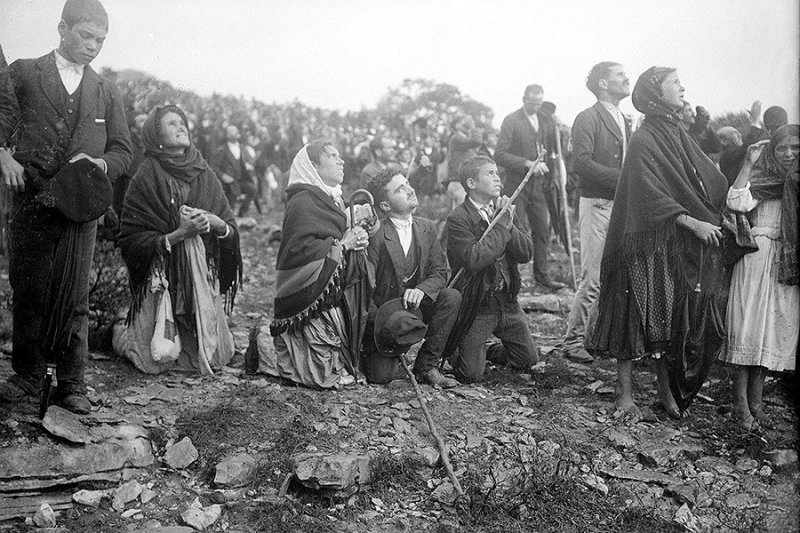

Crowds look at the Miracle of the Sun that occurred during the Our Lady of Fátima apparitions in 1917. / Credit: Public domain
CNA Staff, Oct 13, 2025 / 04:00 am (CNA).
Oct. 13, 1917, marked the last Marian apparition in Fátima and the day on which thousands of people bore witness to the miracle of the dancing sun — a miracle that shattered the prevalent belief at the time that God was no longer relevant.
Marco Daniel Duarte, a theologian and director of the Fátima Shrine museums, shared with CNA the impact that the miracle of the sun made during those days in Portugal.
If one were to open philosophy books during that period, he or she would likely read something akin to the concept conceived by German philosopher Friedrich Nietzsche, who boldly asserted in the late 1800s that “God is dead.”
Also, in 1917 Portugal, the majority of the world was embroiled in war. As World War I raged throughout Europe, Portugal found itself unable to maintain its initial neutrality and joined forces with the Allies. More than 220,000 Portuguese civilians died during the war, thousands due to food shortages and thousands more from the Spanish flu.
A few years before, a revolution had led to the establishment of the First Portuguese Republic in 1910 and a new liberal constitution was drafted under the influence of Freemasonry, which sought to suppress the faith from public life. Catholic churches and schools were seized by the government, and the wearing of clerics in public, the ringing of church bells, and the celebration of public religious festivals were banned. Between 1911 and 1916, nearly 2,000 priests, monks, and nuns were killed by anti-Christian groups.
This was the backdrop against which, in 1917, a lady believed to be the Virgin Mary appeared to three shepherd children — Lucia dos Santos, 10, and her cousins Francisco and Jacinta Marto, 9 and 7 — in a field in Fátima, Portugal, bringing with her requests for the recitation of the rosary, for sacrifices on behalf of sinners, and a secret regarding the fate of the world.
To prove that the apparitions were true, the lady promised the children that during the last of her six appearances, she would provide a sign so people would believe in the apparitions and in her message. What happened on that day — Oct. 13, 1917 — has come to be known as the “Miracle of the Sun,” or “the day the sun danced.”
According to various accounts, a crowd of some 70,000 people — believers and skeptics alike —gathered to see the miracle that was promised: The rainy sky cleared up, the clouds dispersed, and the ground, which had been wet and muddy from the rain, dried up. A transparent veil came over the sun, making it easy to look at, and multicolored lights were strewn across the landscape. The sun then began to spin, twirling in the sky, and at one point appeared to veer toward the earth before jumping back to its place in the sky.
The stunning event was a direct and very convincing contradiction to the atheistic regimes at the time, which is evidenced by the fact that the first newspaper to report on the miracle on a full front page was an anti-Catholic, Masonic newspaper in Lisbon called O Seculo.
The miracle of the sun was understood by the people to be “the seal, the guarantee, that in fact those three children were telling the truth,” Duarte said.
Even today, “Fátima makes people change their perception of God,” since “one of the most important messages of the apparitions is that even if someone has separated from God, God is present in human history and doesn’t abandon humanity.”
This story was first published on CNA on Oct. 12, 2017, and has been updated.
Read MoreLooking for a sky event this week? Check out our full Sky This Week column. October 12: The Saturn Nebula shines Last Quarter Moon occurs this afternoon at 2:13 P.M. EDT. A few hours later, the Moon passes 4° north of Jupiter at 6 P.M. EDT. The pair rises around midnight and are visible into the early-morningContinue reading “The Sky Today on Monday, October 13: The Moon reaches Last Quarter”
The post The Sky Today on Monday, October 13: The Moon reaches Last Quarter appeared first on Astronomy Magazine.
Read More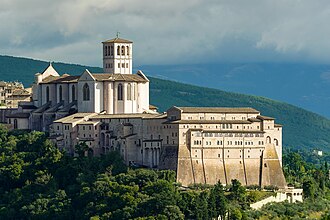
:max_bytes(150000):strip_icc():format(jpeg)/TAL-lead-image-DERRYNI1025-68c3b283b18d448fa1a9dcb005b28b09.jpg)